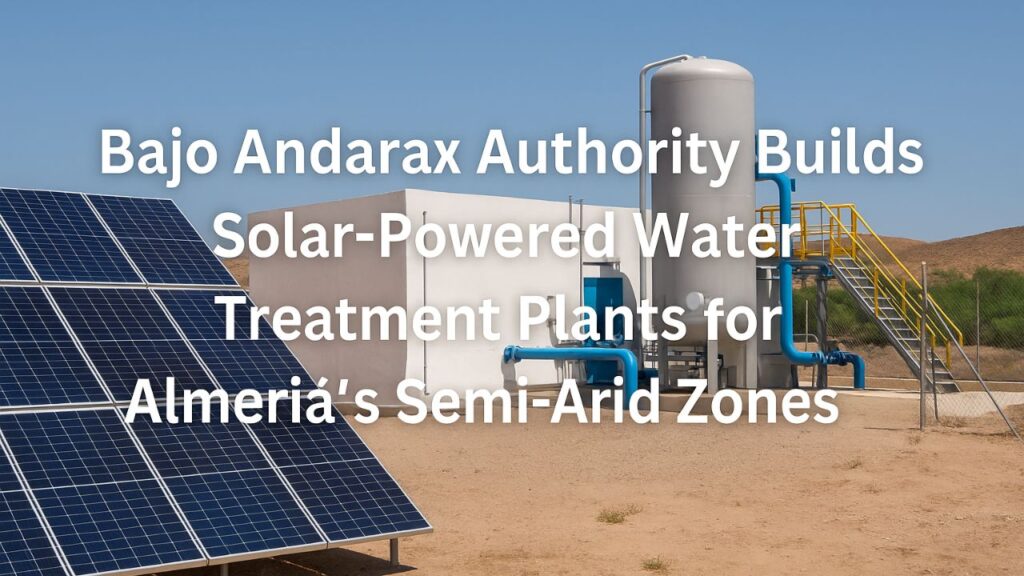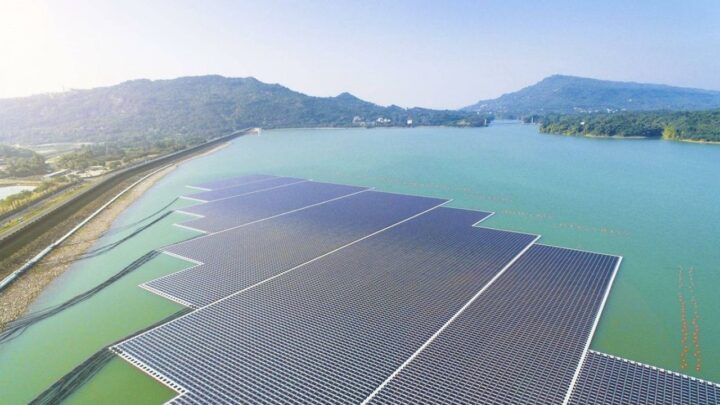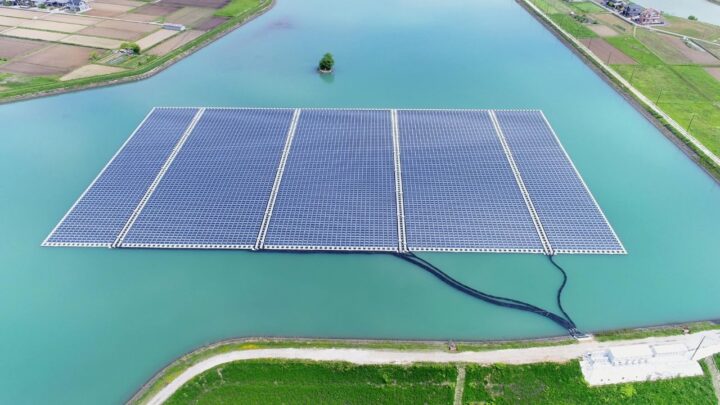Solar-Powered Water Treatment Plants – In a visionary step toward sustainable resource management, the Bajo Andarax Water Authority in Almería has launched an ambitious project to build solar-powered water treatment plants across the semi-arid zones of the province. These initiatives aim to tackle water scarcity, improve water quality, and reduce dependence on fossil-fuel-based energy — a game-changer for drought-affected communities in southern Spain. Almería, one of the driest regions in Europe, has long struggled with irregular rainfall and water shortages. With agriculture and rural households depending heavily on limited groundwater reserves, the need for an efficient and sustainable water treatment solution has become critical. The Bajo Andarax initiative is more than just a technological project — it is a step forward in integrating renewable energy into essential public infrastructure.


What is the Bajo Andarax Solar Water Project?
This new initiative is part of a broader climate resilience program led by local government bodies and funded in part by EU green energy grants.
Key Objectives of the Project:
 Weekend Rain Alert September 2025 – Heavy Rainfall to Impact Several South African Regions
Weekend Rain Alert September 2025 – Heavy Rainfall to Impact Several South African Regions
- Combat water scarcity in Almería’s semi-arid zones
- Use renewable solar energy to power treatment operations
- Provide clean and safe drinking water for remote communities
- Promote sustainable water reuse for agricultural purposes
- Reduce long-term operational costs and carbon emissions
Locations Identified for Solar Water Plants
The project is being rolled out in phases, with an initial focus on the most water-stressed areas.
| Zone Name | Population Benefited | Planned Capacity | Solar Panel Output | Estimated Completion |
|---|---|---|---|---|
| Huércal de Almería | 12,000 | 3,000 m³/day | 250 kW | January 2026 |
| Viator | 8,000 | 2,500 m³/day | 200 kW | March 2026 |
| Benahadux | 6,500 | 1,800 m³/day | 150 kW | April 2026 |
| Gádor | 4,200 | 1,200 m³/day | 120 kW | June 2026 |
| Rioja | 2,800 | 800 m³/day | 100 kW | July 2026 |
| Santa Fe de Mondújar | 1,500 | 500 m³/day | 80 kW | August 2026 |
| Pechina | 3,000 | 900 m³/day | 110 kW | September 2026 |
These plants will make use of cutting-edge membrane filtration and UV purification systems, ensuring safe water for domestic and agricultural use.
Benefits of Solar-Powered Water Treatment
The integration of solar energy into water purification offers both environmental and financial advantages for Almería.
Environmental and Economic Benefits:
- Zero-emission energy: No greenhouse gases released during plant operation
- Energy independence: Less dependence on grid power
- Low operational cost: Once installed, solar panels reduce energy bills significantly
- Water security: Improved supply stability during drought periods
- Job creation: Local employment in solar panel installation and plant maintenance
Technology and Innovations Used
These water treatment plants are built using a hybrid design model — combining traditional sand filtration methods with modern solar automation.
Technologies Deployed in the Treatment Plants
- Photovoltaic Solar Panels: To generate electricity for daily operations
- Smart Inverter Systems: To optimize energy consumption
- Membrane Filtration Units: To remove suspended solids and microbes
- SCADA Monitoring System: Remote control and diagnostics of treatment functions
- Battery Backup Systems: Ensures 24/7 functionality, even on cloudy days
This hybrid design allows the system to function even in low-light conditions, critical for consistent performance in semi-arid climates.
Strategic Importance for Agriculture and Local Communities
The treated water will not only serve households but also benefit local agriculture, especially fruit and olive farms reliant on irrigation.
Impact on Local Agriculture
- Greywater reuse: Treated water reused for irrigation
- Increased crop yield: Consistent water supply improves productivity
- Reduced well pressure: Less dependence on groundwater
- Cost savings: Farmers save on water procurement and fuel
- Soil sustainability: Cleaner water reduces salinity damage
Funding and Partnerships
The solar water project is backed by a mix of public and private funding, combining innovation with regional cooperation.
 Youth Support Grant R12,500 September 2025 – Applicants Advised to Prepare Documents Early
Youth Support Grant R12,500 September 2025 – Applicants Advised to Prepare Documents Early
Key Financial and Development Partners:
| Partner Name | Role in Project | Funding Share |
|---|---|---|
| European Union Green Fund | Infrastructure and renewable energy | €3.5 million |
| Junta de Andalucía | Local government support and policy | €1.2 million |
| Bajo Andarax Water Authority | Project execution and oversight | €900,000 |
| Local Engineering Firms | Technical and construction services | In-kind resources |
| University of Almería | Technology advisory and research | €300,000 |
This collaboration ensures both scientific credibility and localized implementation tailored to the unique geography of Almería.
Future Expansion Plans
Bajo Andarax Authority has indicated that this is only the beginning. Once the first phase is complete, a second expansion phase is likely to target additional rural pockets across the province.

Proposed Additions in Phase 2 (Post-2026)
- Installation of desalination units for coastal areas
- Community training programs on water conservation
- Partnerships with local schools for awareness
- Introduction of AI monitoring to improve treatment efficiency
- Pilot model for replicating this project across southern Spain
This roadmap reflects a scalable model with room for adaptation based on future environmental needs and technological advancements.
FAQs
1. What makes these water treatment plants different from traditional ones?
These plants are powered by solar energy and use modern filtration technologies, reducing energy costs and emissions.
2. Will these plants benefit local farmers directly?
Yes, farmers can use the treated water for irrigation, reducing groundwater stress and increasing crop output.
3. How is the project being funded?
The project is funded through EU Green Energy grants, regional government support, and contributions from local authorities and universities.
4. When will the first plant become operational?
The first plant in Huércal de Almería is expected to be operational by January 2026.
5. Is this project environmentally sustainable?
Absolutely. It combines clean energy with efficient water management, aligning with EU climate goals and sustainability targets.



